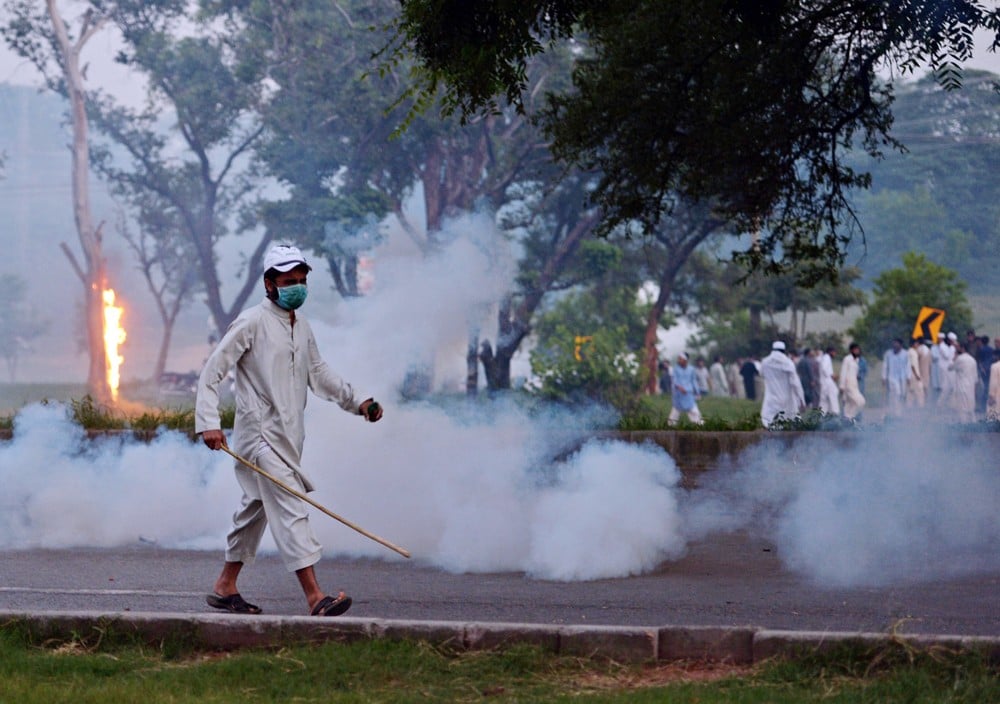
Until we overcome factors behind religious extremism, the danger of violence in the name of religion will always remain as a potential threat

In the wake of National Action Plan, Pakistan has made huge gains against religious militancy. The extension of state’s writ to Fata and significant decline in Taliban violence in width and breadth of the country are indicators of state making impressive strides in pacifying the country. That is definitely a reason for celebration. Nevertheless, we are facing a more worrying and enduring concern in the form of religious extremism. This article is an attempt to ascertain its main drivers and suggest remedies.
Religious extremism, I believe, is a firmly held belief that a particular religious group is in an exclusive possession of the divinely ordained truth. The singularly profound implication of such a belief is this: except for those who subscribe to the belief, all others are on the wrong path and hence the enemies of the true religion. In Pakistan, there are four main drivers of religious extremism.
Although the use of religion as a means to weld together diverse ethno-nationalist groups can be traced back to the early years after independence, the overt religiosity of education system and the distortion of history began after the break away of East Pakistan into Bangladesh only to reach its maturity under Ziaul Haq. Our history textbooks are no less responsible in fostering uniformity in the minds of our students. Embedded in religious fervour, Islamic studies, Islamic history and Pakistan studies and Social studies are loaded with biased contents that leave learners less amenable to entertain any alternative perspective. Even the term ‘Islamic history’ is an accurate description of the otherwise history of Muslims.
Label anything as ‘Islamic’ -- no matter how mundane it may be -- leaves very little, if any, room for difference. The aim is not to refute that across the border history is no less polluted but to put our own house in order. Although we are not the only one to teach history selectively, our inculcation of conformity encourages orthodoxy at the expense of disagreement, the very first step towards inquisitive enquiry. Our public education system stifles creativity and promotes learning by rote as much as it imposes uniformity.
There is a genuine need to revise the syllabi taught in religious seminaries. In Pakistan, religious extremism is a misnomer for sectarian extremism until it involves Muslims versus non-Muslims, primarily Christians. While nurturing sheer conservative mentality -- one in collision with modernity -- and extremism in its mild form were characteristic of madrassa education system since colonial era, the association of seminaries with religious and sectarian militancy was the result of Afghan jihad and Riyadh-Tehran proxy war. At present, religious learning is a euphemism for sectarian scholarship.
The five madrassa unions in Pakistan are, in fact, five exclusive paths to allegedly divine truth with each at loggerheads with others. Post Iranian revolution, there was no dearth of sectarian literature and religious edicts, designating various sects as ‘infidel’, ‘blasphemer’ and ‘polytheist’ and among others ‘wahabi’.
Media, especially its electronic wing, is a relatively new entrant in spreading venom. Print media was used in the shape of weeklies, monthly magazines, pamphlets and leaflets connected with various seminaries. Now there is an extensive availability of printed material linked to various sectarian and militant outfits. For the last couple of years, various religious and sectarian TV channels have entered the arena, having a wider impact on society. Appealing to religious and sectarian sentiments, the widespread use of MP3s and DVDs are effective means of communication. More, at times, media coverage and airing of sectarian views of commentators either result in the killing of men from marginalised sects or render them vulnerable to violence.
Social media is the latest entrant. Since 2005, there has been an ever increasing use of internet in Pakistan, especially in the shape of social networking websites such as Facebook. This has been reducing the use of electronic and print media as gatekeepers between speaker and the audience. The flip side of freedom on the internet is the absence of any corresponding obligation thereof. The net result is the online radicalisation of youth.
While Taliban-led religious militancy may be breathing its last, sectarian extremism is the flickering ember, which has the potential to trigger violence in the so-called sacred cause of religion. In order to reverse the trend of sectarian extremism, several steps are necessary.
Curriculum reform in public sector education is essential. The invention of history should give way to its discovery. Similarly, the role of religion should be confined to Islamic Studies and Islamic literature. All other subjects should be taught independent of religious bearing. On madrassa front, the mere registration of madrassas will not yield the desired results until it is accompanied by eliminating regional influences and overhauling of its syllabi.
While taking the clergy on board, efforts should be geared towards genuine religious scholarship rather than inculcating sectarianism. Inflammatory and blasphemous literature should be completely banned. No religious scholar or a madrassa be allowed to issue an edict designating someone as beyond the pale of Islam.
Media should promote religious and sectarian harmony. It should serve as a forum to promote dialogue among scholars of various sects. The government should ensure that no TV channel is reviling any other religion and sect. Until we overcome factors behind religious extremism, the danger of violence in the name of religion will always remain as a potential threat.